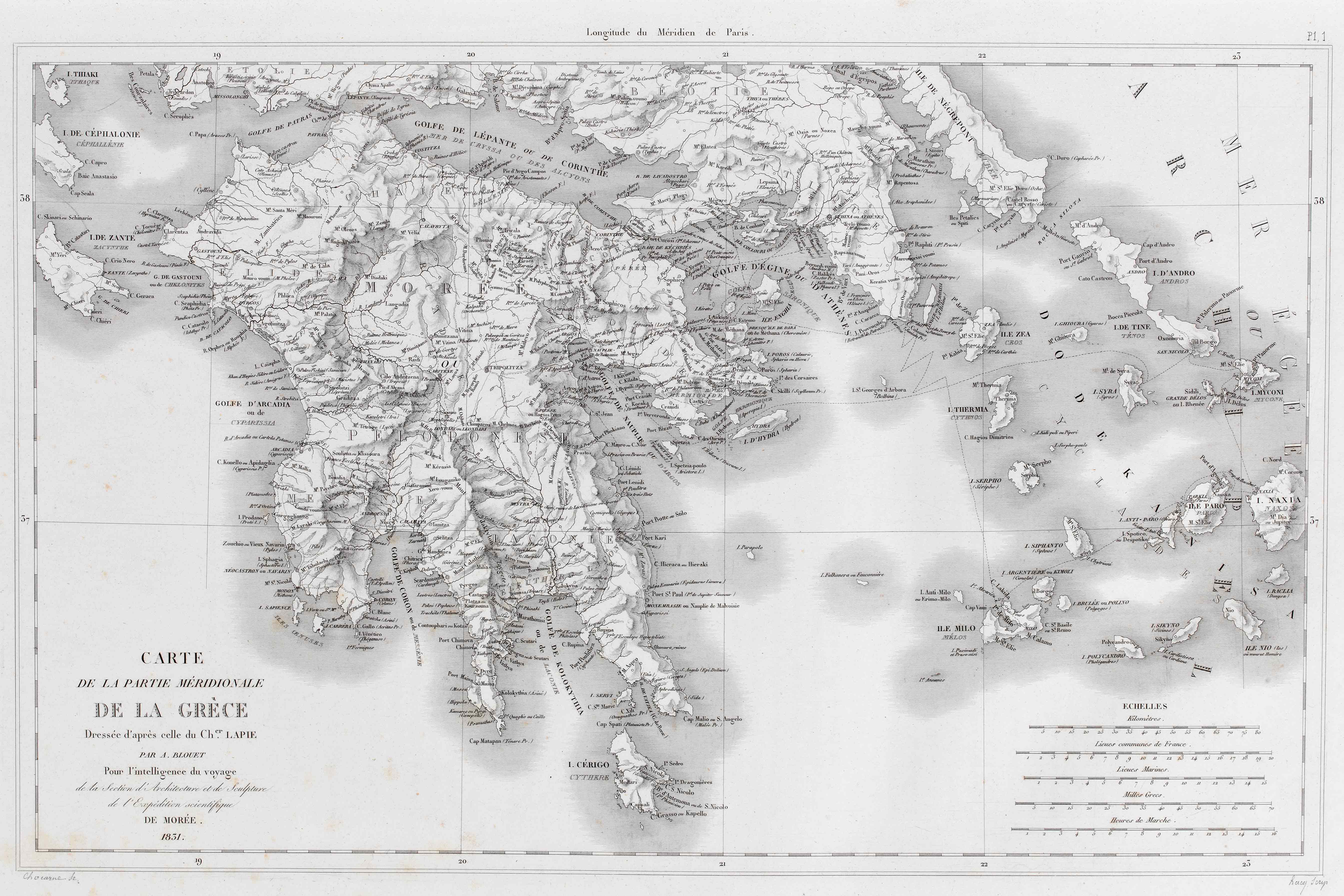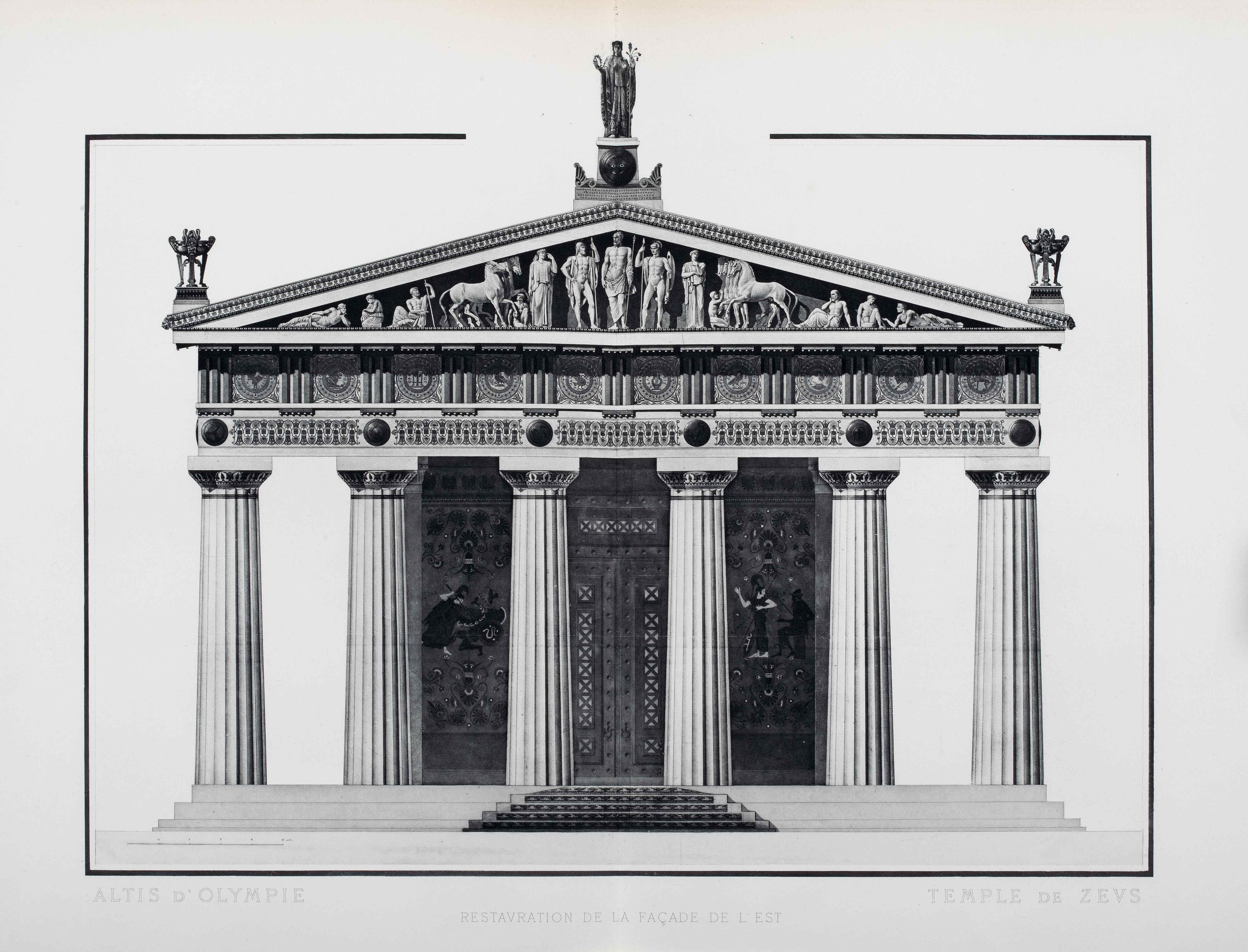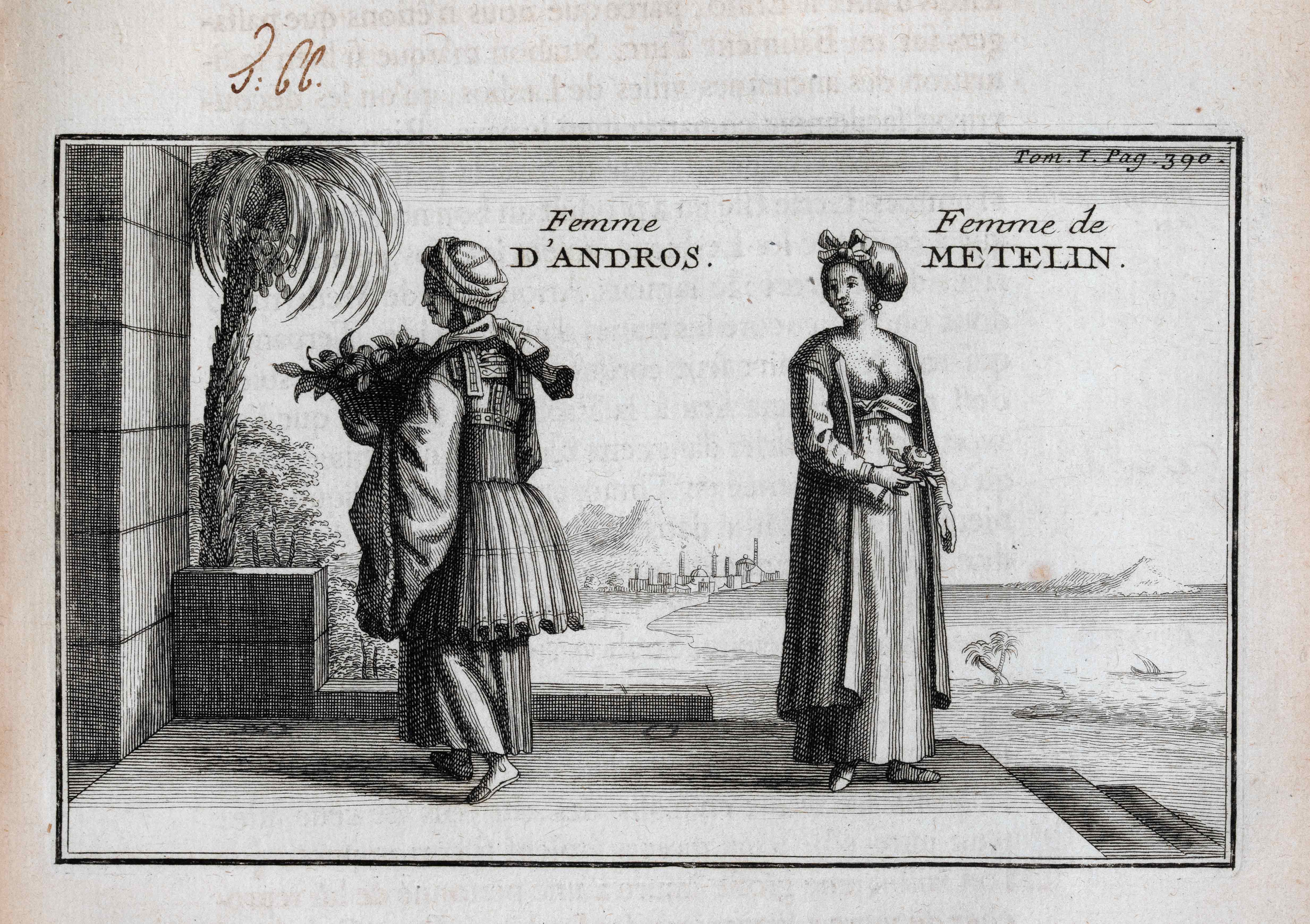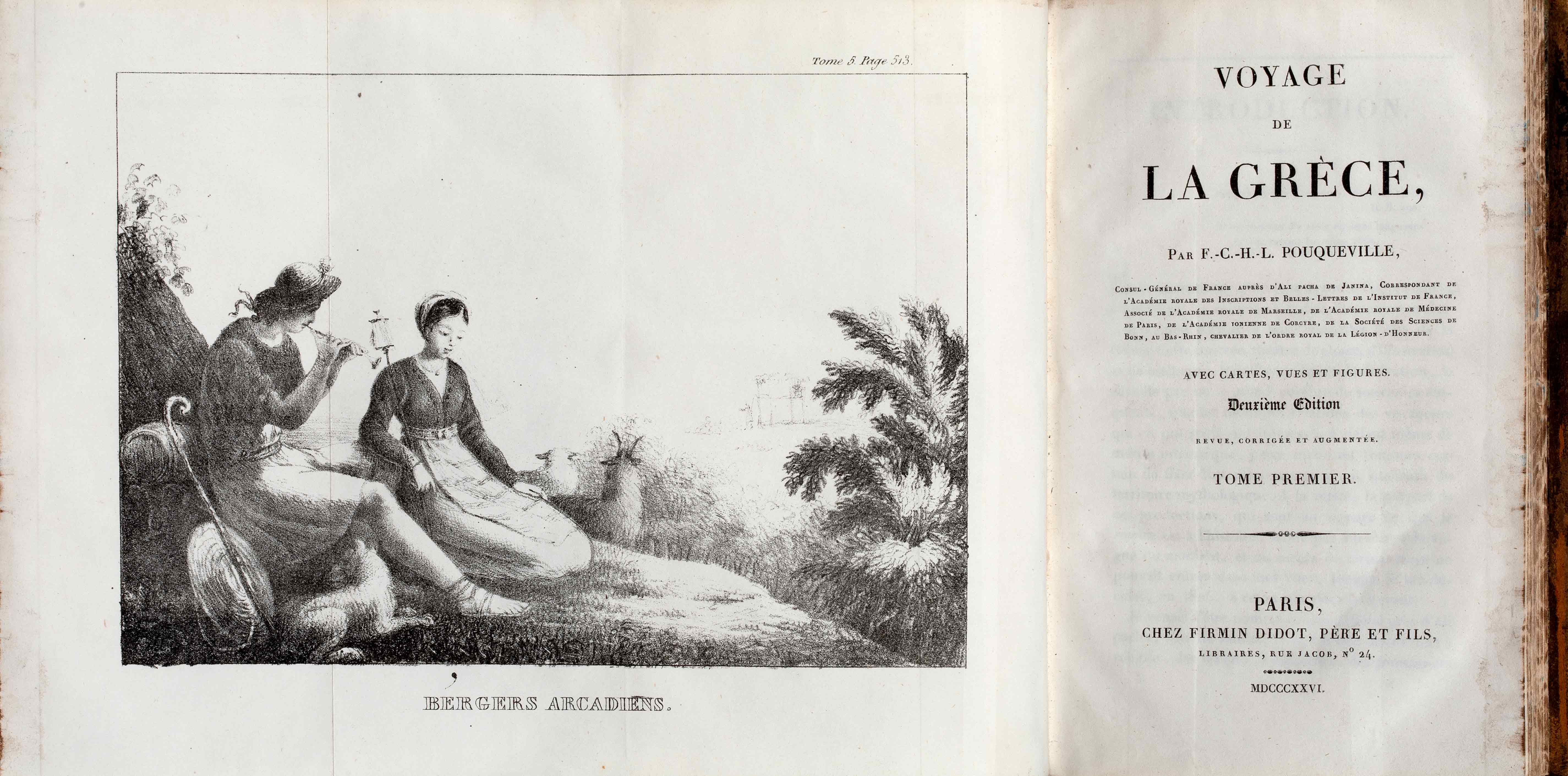Expédition scientifique de Morée
The rare book Expédition scientifique de Morée, ordonnée par le gouvernement français, Premier Volume is the work of the French Scientific Expedition to Morea in 1829. The Scientific Expedition accompanied the French troops that fought for the liberation of the Peloponnese. The book features etchings, maps, and drawings of monuments and landscapes from the Peloponnese.
External appearance and illustrations
The book Expédition scientifique de Morée, ordonnée par le gouvernement français, Premier Volume is 40 cm (width) x 59 cm (height). It is maintained in fine condition.
It features a number of etchings and drawings of the Peloponnese. They depict architectural monuments, sculptures, inscriptions and landscapes from Methoni, Pylos, Koroni, Navarino and Olympia.
An expedition of knowledge
As the title suggests Expédition scientifique de Morée, ordonnée par le gouvernement français, Premier Volume (Scientific Expedition of Morea, ordered by the French Government, Volume 1), the book presents the findings of a scientific expedition to the Peloponnese.
In the period 1828-1833, the French Government organised the Morea Expedition: It sent French troops to liberate the Peloponnese from the Ottoman-Egyptian occupation forces.
The French troops were accompanied by the Scientific Expedition to Morea, also by order of the French Government. The object of the Scientific Expedition was to carry out the historical, geographical, archaeological and illustrational documentation of Greece.
The Scientific Expedition to Morea was associated with important scientific disciplines:
- Geography and Geology.
- Natural history.
- Cartography.
- Architecture.
- Archaeology and Ethnography.
All these disciplines found an exceptional field of application of their newly acquired know-how in the Peloponnese.
Scientists and benefactors
The French scientists mapped the Greek land, establishing the basis for proper recording of the Peloponnese. At the same time, however, the Scientific Expedition to Morea marked the opposition with the Ottoman past, and the attempt to form a new state.
During their stay, the members of the Expedition:
- Rebuilt fortifications, such as the Castle of Navarino.
- Built roads, such as the ones between Navarino-Methoni and Argos-Nafplio.
- Built bridges, such as the one over the River Pamisos, on the Methoni-Kalamata road.
- Built military camps.
Science in the service of tradition
The main accomplishment of the French Scientific Expedition to Morea was that it delivered travel tales, multiple maps and a huge amount of information on the conditions at that time, and in ancient or later years.
The head of the Expedition, Bory de Saint Vincent, wrote in the volume Geography: “The ground geography of a mountainous country such as the Peloponnese has created isolated basins, which do not communicate with each other, leading to the differentiation of the people in every area, so that the inhabitants are instilled with distinct customs, based on very different needs and interests.
The ancient city-states of the Peloponnese were formed because of the land geography, each with its particular patriotism, the characteristic spirit of which will continuously emerge, whatever culture we attempt to introduce to these areas, until communication routes, well drawn on the mountain cols, solid roads along the swamps, and strong bridges over rivers or streams, can erase the obstacles posed by nature...”
Guillaume-Abel Blouet: an architect and a traveller
Guillaume-Abel Blouet (1795-1853) was born in Paris. He studied Roman Architecture at the French Academy of Rome. He was responsible for the restoration of the Roman baths of Emperor Caracalla.
In 1829 he was appointed Director of the Department of Architecture and Sculpture of the French Scientific Expedition to Morea. He made the first archaeology excavations in ancient Messini and then Olympia, where he discovered the Temple of Zeus.
The Alpha Bank Rare Book Collection is not open to the public.
However, you may visit the other collections of the Alpha Bank Library.







